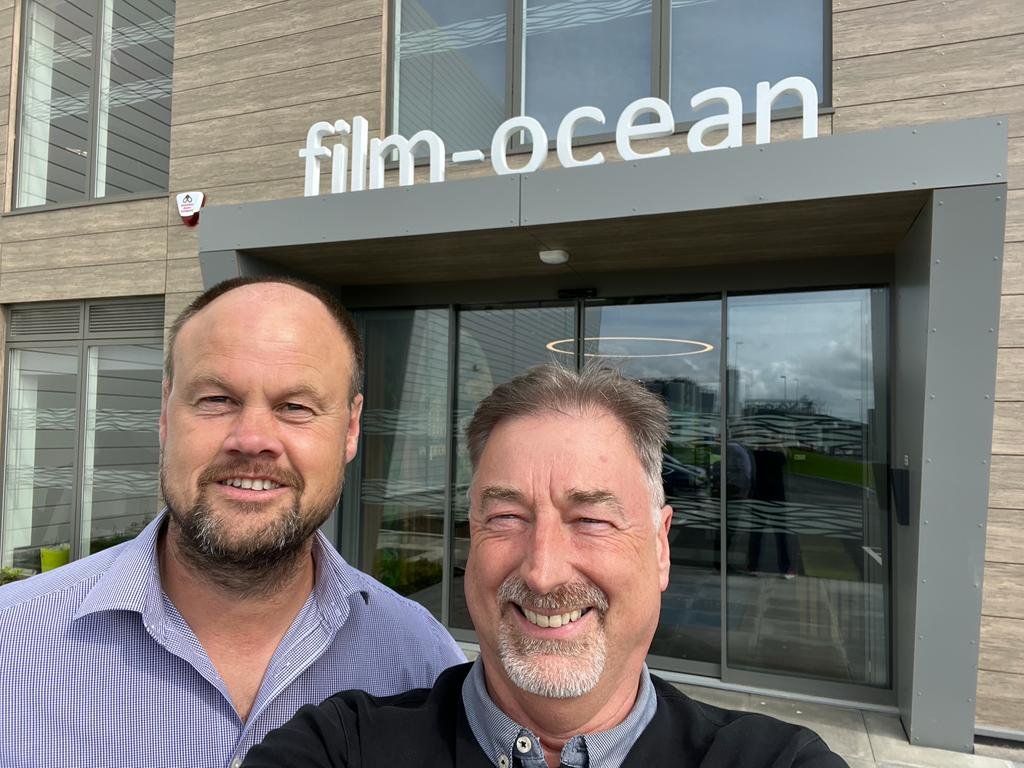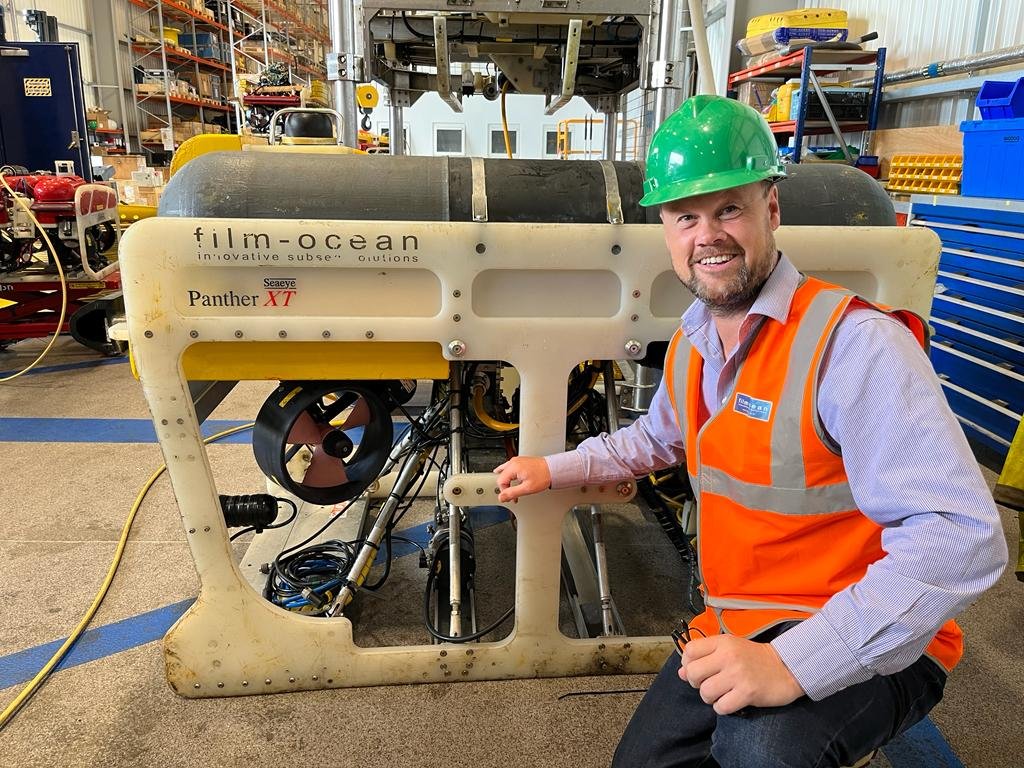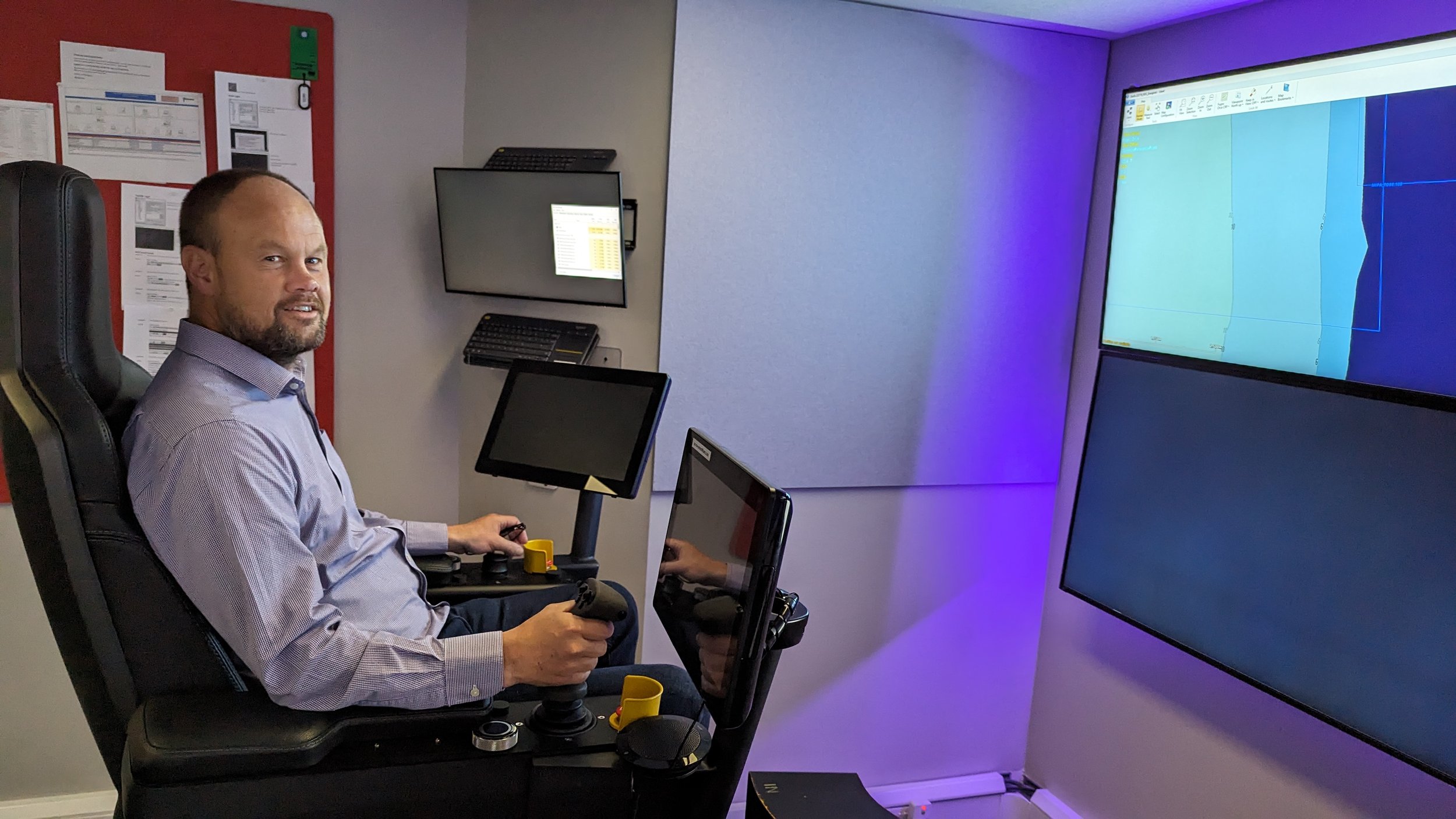Supplier Visits to Fugro and Film Ocean
Supplier Visits to Fugro and Film Ocean
Buchan Offshore Wind’s Supply Chain Manager Adam Hollis travelled to Aberdeenshire to visit a couple of suppliers on a mission to help inform how the project will approach operations and management (O&M).
A fundamental O&M objective is to avoid deploying people offshore. The main objective behind this is to reduce the risk of harm to workers, however, this can also reduce cost.
Adam visited Fugro’s ROC (Remote Operations Centre) just north of Aberdeen. He was able to see their onshore team navigate a 12 m long uncrewed surface vehicle (USV) which happened to be in the Danish sector of the North Sea.
There are several advantages to the ROC. This kind of innovative technology is an example of how the industry can overcome some of the challenges around a lack of a locally available skilled workforce:
Eliminates human time offshore (safer and lower cost);
Better welfare for people (improved conditions for workforce onshore, not offshore);
Greater collaboration (client and other team members can collocate – exchange information quicker and solve problems right away);
Better training environment (opportunities to work across a larger team, more efficient use of people and quicker training).
Adam also had the chance to sit behind the remote controls of a ROV (remote operations vehicle) which can be deployed from the UCV. Unfortunately, no ROV was deployed at the time but typically ROV’s are controlled remotely in the same office that the marine crew works from. Again, this improves communication, allowing for quicker decision making.
After visiting Fugro, Adam then visited Film-Ocean in Ellon in their brand new office and ROV maintenance facility.
Adam learnt more about the kind of work that ROVs perform, both during installation of floating foundations, but more importantly during the future O&M phase of the wind farm. ROVs will be used to carry out routine inspections to monitor changes in the condition of the cables, mooring systems and underneath of the floating foundations. They can also be used to carry out subsea maintenance activities such as cleaning marine growth from surfaces.
Adam looked at some ROVs that recently returned from being used offshore – they range in size from a microwave oven to a large car. One of the ROVs was being fitted with bespoke tools used for grabbing and cleaning. Before going offshore again, the client will typically check the ROVs in the purpose built test tank.
These ROVs can be controlled from shore and are key to reducing human time offshore. Prior to the extensive use of ROVs, divers would typically perform many more subsea activities. The way we use these machines as part of maintenance campaigns will only get smarter and reduce the long term cost of operating and maintaining offshore wind farms in the years to come.




